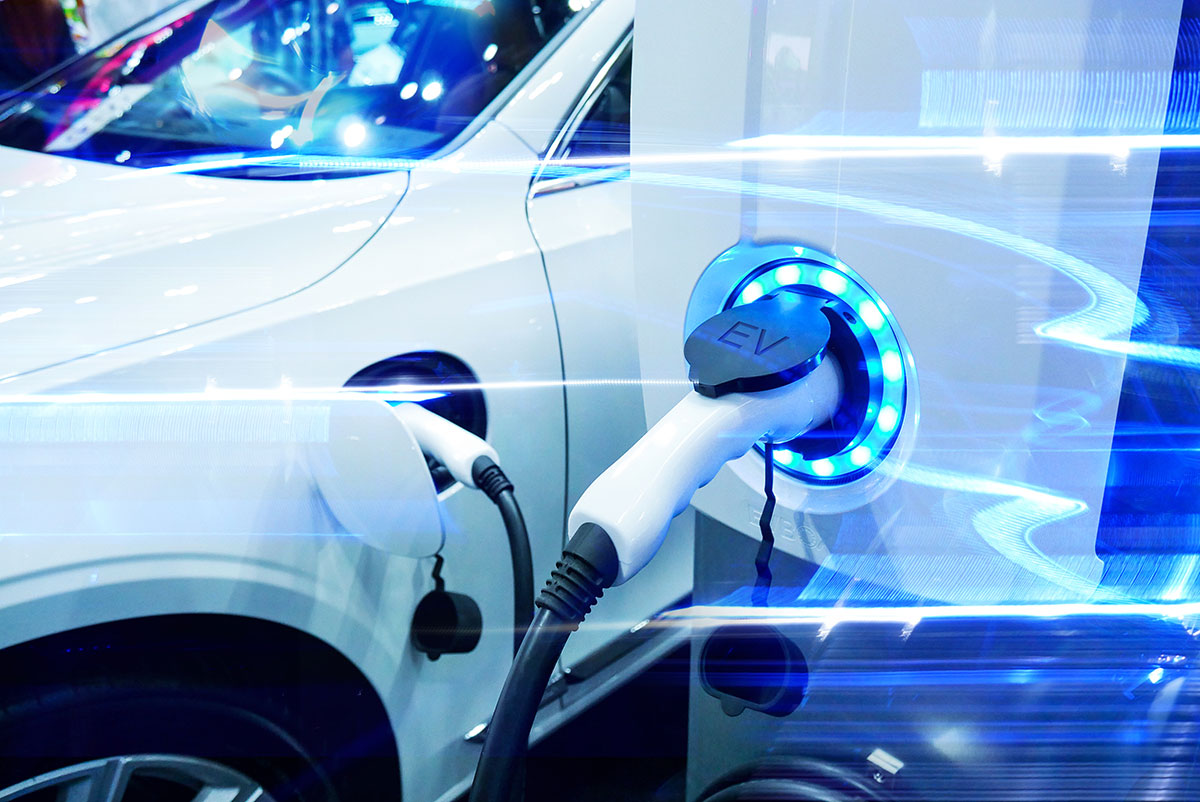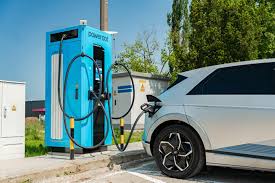The Role of 5G Technology in the Automotive Industry

Introduction
The advent of 5G technology promises to revolutionize many industries, and the automotive sector is no exception. With faster speeds, lower latency, and the ability to connect more devices simultaneously, 5G is set to enhance various aspects of the automotive industry. From autonomous vehicles to vehicle-to-everything (V2X) communication, 5G is enabling new possibilities for smarter, safer, and more efficient transportation. This article will explore the role of 5G in the automotive industry, its current applications, potential benefits, and future impact.
1. What is 5G Technology?
- Definition
- 5G is the fifth generation of mobile network technology, following 4G LTE. It offers significantly higher data speeds, reduced latency, and the ability to connect a vast number of devices simultaneously. While 4G enabled faster mobile internet and better communication, 5G takes it further, providing ultra-fast, reliable, and real-time connectivity.
- Key Features of 5G
- High Speed: 5G promises download speeds up to 100 times faster than 4G, making it ideal for real-time data sharing.
- Low Latency: 5G reduces latency (the delay between sending and receiving data), which is crucial for applications requiring instant feedback, such as autonomous driving.
- Massive Device Connectivity: 5G can connect millions of devices within a small area, allowing for the seamless integration of smart devices and systems in vehicles and infrastructure.
2. How 5G is Transforming the Automotive Industry
- Autonomous Vehicles
- Real-Time Communication: Autonomous vehicles rely heavily on constant communication with other vehicles, infrastructure, and cloud systems. 5G’s low latency allows for near-instantaneous data exchange between these entities, enabling self-driving cars to make quick decisions based on real-time information.
- Safety Enhancements: 5G enhances the safety of autonomous vehicles by enabling them to communicate with traffic signals, pedestrians, and other cars, providing situational awareness that is crucial for avoiding accidents.
- Vehicle-to-Everything (V2X) Communication
- Vehicle-to-Vehicle (V2V): 5G enables vehicles to communicate with each other, exchanging information such as speed, direction, and location. This helps prevent collisions by providing drivers with early warnings about potential hazards.
- Vehicle-to-Infrastructure (V2I): Vehicles can also communicate with infrastructure, such as traffic lights, road signs, and toll booths. 5G ensures that vehicles receive real-time updates about road conditions, traffic flow, and traffic signal statuses.
- Vehicle-to-Pedestrian (V2P): 5G can help vehicles communicate with pedestrians’ smartphones, alerting drivers and pedestrians to potential collisions, especially in urban areas.
- Enhanced Infotainment and Connectivity
- High-Speed Data Transfer: 5G enables seamless, high-quality streaming of entertainment content, including movies, music, and live TV, without buffering. This provides passengers with an enhanced infotainment experience, even on long road trips.
- In-Vehicle Internet of Things (IoT): 5G enables vehicles to integrate with other smart devices in the car, such as personal assistants, connected home systems, and wearable devices, offering personalized experiences for drivers and passengers.
- Predictive Maintenance
- Real-Time Diagnostics: 5G allows for continuous monitoring of vehicle systems, providing real-time data on the health of various components. This can lead to predictive maintenance, where vehicles can alert owners or service centers about potential issues before they become critical.
- Improved Fleet Management: For businesses that operate fleets of vehicles, 5G enables real-time tracking and diagnostics of every vehicle, allowing for better fleet management and reducing downtime by addressing issues before they affect operations.
3. The Benefits of 5G in the Automotive Industry
- Improved Safety and Security
- Reduced Reaction Time: With 5G’s ultra-low latency, autonomous and connected vehicles can react faster to potential hazards, improving overall road safety.
- Enhanced Emergency Response: 5G allows vehicles to communicate more effectively with emergency services, providing real-time location data and other relevant information in the event of an accident.
- Increased Efficiency
- Faster Data Exchange: 5G’s high speeds enable faster communication between vehicles and infrastructure, leading to improved traffic flow and reduced congestion.
- Smart Traffic Management: Cities can use 5G-powered systems to monitor traffic conditions and adjust traffic signals in real-time, helping to reduce traffic jams and pollution.
- Cost Savings
- Operational Efficiency: Businesses in the logistics and transportation sectors can benefit from the improved connectivity and fleet management capabilities that 5G offers, leading to lower operational costs and increased productivity.
- Reduced Downtime: With predictive maintenance powered by 5G, vehicles are less likely to experience unexpected breakdowns, leading to reduced maintenance costs and fewer service interruptions.
- Enhanced Customer Experience
- Personalized Services: 5G enables vehicles to gather more data from their surroundings and passengers, allowing for highly personalized experiences, such as adjusting the vehicle’s temperature, music, and seat settings based on the driver’s preferences.
- Faster Updates and Upgrades: Vehicles can receive software updates over-the-air (OTA) at high speeds, ensuring that drivers always have the latest features and security patches without needing to visit a service center.
4. Challenges of Implementing 5G in the Automotive Industry
- Infrastructure Requirements
- Expanding Coverage: To fully realize the potential of 5G, a robust infrastructure of 5G towers and antennas needs to be deployed. This requires significant investment and coordination between governments, telecommunications companies, and automakers.
- Urban vs Rural Divide: While urban areas are likely to see rapid adoption of 5G, rural areas may face delays in infrastructure deployment, potentially limiting the benefits of 5G in these regions.
- Data Privacy and Security
- Increased Vulnerability: With more vehicles and devices connected through 5G, there is an increased risk of cybersecurity threats. Protecting sensitive data and ensuring secure communication between vehicles, infrastructure, and users will be crucial.
- Regulation and Standards: The automotive industry will need to work with regulators to establish standards and protocols that ensure the safe and secure use of 5G technology in vehicles.
- High Costs of Implementation
- Expensive Hardware: The integration of 5G technology into vehicles requires new hardware, including sensors, antennas, and processors, which can increase the cost of production.
- Network Upgrades: Automakers and telecommunications companies will need to make significant investments in upgrading their networks and vehicles to fully support 5G capabilities.
5. The Future of 5G in the Automotive Industry
- Autonomous Driving
- The continued development of autonomous vehicles will be greatly enhanced by 5G, with real-time data sharing between vehicles and infrastructure allowing for fully autonomous driving. This will lead to safer roads, improved traffic flow, and fewer accidents caused by human error.
- Smart Cities
- 5G will be a key enabler of smart cities, where vehicles, infrastructure, and other devices are interconnected. This will result in improved traffic management, optimized public transportation, and a more efficient urban environment.
- Next-Generation In-Vehicle Experiences
- 5G will continue to improve in-vehicle entertainment and connectivity, offering passengers the ability to stream high-definition content, access real-time navigation, and interact with virtual assistants seamlessly.
- Mass Adoption of Electric and Connected Vehicles
- The combination of 5G, autonomous driving, and electric vehicles will shape the future of transportation, leading to cleaner, smarter, and more efficient mobility solutions.
Conclusion
5G technology is set to revolutionize the automotive industry, enabling faster, safer, and more efficient vehicles. By facilitating real-time communication between vehicles, infrastructure, and passengers, 5G will play a critical role in the development of autonomous vehicles, connected transportation networks, and smart cities. As the technology continues to evolve, the automotive industry will witness significant advancements that will transform the way we travel, drive, and interact with our vehicles. Despite the challenges, the integration of 5G into the automotive ecosystem promises to drive the future of mobility.





